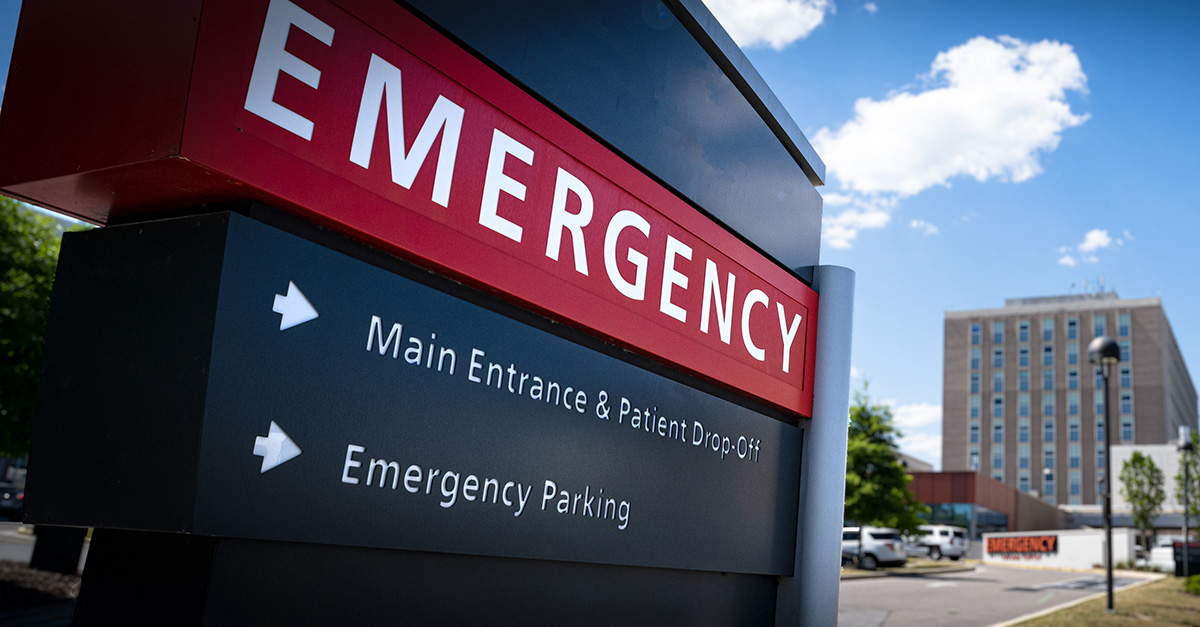Understanding the Difference Between an Emergency Room and a Trauma Center
When it comes to treating physical trauma,
every moment counts.
Knowing where to go during a medical emergency will make a life-changing difference. While both emergency rooms (ERs) and trauma centers provide urgent medical treatment, they serve different purposes. Understanding these differences can help you make the right decision when minutes matter.

Emergency Rooms (ER)
An emergency room is a department within a hospital designed to handle a wide range of medical emergencies, from minor injuries like sprains and cuts to serious conditions such as heart attacks and strokes. Emergency rooms are staffed with physicians, nurses, and healthcare professionals who are trained to assess and treat acute illnesses or injuries as they arrive.
- Primary Role: Treats all types of medical emergencies.
- Common Conditions: Broken bones, chest pain, severe flu, infections, and other urgent but non-life-threatening issues.
- Availability: Open 24/7 for immediate medical attention.

Trauma Centers
A trauma center is a specialized facility equipped to handle the most severe and life-threatening injuries, often resulting from accidents, violence, or disasters. Trauma centers have advanced resources, including highly specialized trauma surgeons, critical care specialists, and rapid access to surgery to provide life-saving care within 60 minutes.
- Primary Role: Focuses on treating life-threatening injuries that require immediate and specialized care.
- Common Cases: Severe car accidents, gunshot wounds, traumatic brain injuries, and complex fractures.
- Designation Levels: Trauma centers are categorized by levels (Level I to Level IV) based on the depth of resources and expertise available. Level I centers provide the highest level of care.
- Availability: Open 24/7 for immediate medical attention.
The Difference Between Emergency Rooms & Trauma Care Centers
- Level of Care: While all trauma centers have emergency rooms, not all hospitals with ERs are equipped to be trauma centers.
- Specialization: Trauma centers offer a higher degree of specialization for critical injuries compared to standard ERs.
- Resources: Trauma centers have specialized teams on standby 24/7, including trauma surgeons, neurosurgeons, and orthopedic specialists, and may provide immediate surgical intervention.
What to Expect When Visiting an ER vs. a Trauma Center
When you arrive at an emergency room, your condition will be evaluated, and treatment will be provided based on the severity of your injury or illness. ERs will refer patients to trauma centers if the injury requires more advanced care.
At a trauma center, patients with severe, life-threatening injuries will be treated immediately by specialized teams. If you or a loved one is experiencing a traumatic event—such as a severe car accident or a catastrophic fall—heading to a trauma center near you may ensure faster access to life-saving surgery or interventions.
Understanding Trauma Center Levels
Trauma centers, unlike emergency rooms, are categorized into levels based on their ability to provide care:
Level I Trauma Centers
A Level I Trauma Center is the highest designation. It is a regional center that offers the greatest level of comprehensive care. At this level, a hospital can provide total care for every aspect of traumatic injury, from prevention to rehabilitation. It has 24/7/365 days a year of in-house coverage by general surgeons supported by immediate activation of care in various specialties, including orthopedic surgery, neurosurgery, plastic surgery. Level I centers are also academic institutions that actively collaborate with others in trauma-related research, innovative technologies and treatment, and best practices. Their research contributes to improving patient outcomes and shaping the future of trauma care.
Level II Trauma Centers
Level II facilities are a crucial resource in the trauma care system. They can initiate definitive care for all injured patients. They offer 24-hour immediate coverage by general surgeons as well as specialty coverage. Patients with very complex injuries may require transfer to a Level I center. While these hospitals offer the same level of clinical care as Level I centers, they are not usually research facilities.
Level III Trauma Centers
Level III centers are often found in smaller communities and rural areas. Trauma centers at this level provide initial stabilization and trauma assessment. They can also provide resuscitation and emergency surgery. They will transfer patients requiring more definitive care to Level I or II centers if needed. They are required to have emergency department physicians and general surgeons.
Level IV Trauma Centers
Level IV centers provide advanced trauma life support and stabilization of trauma patients prior to transferring them to a higher level center. They may use mid-level providers to assist in expediting patient transfers when more definitive care is needed. They may not have a physician available 24/7 every day of the year. These centers may be a clinic or a hospital, often located in remote or underserved regions.
Finding a Trauma Center Near You
Georgia has 34 trauma centers strategically located to provide life-saving care when it’s needed most. From Level I centers offering the highest degree of specialized care, to smaller Level IV centers providing critical stabilization, each trauma center plays a key role in Georgia’s trauma system.
View the trauma center locations now to identify the nearest facility, and ensure you know where to go in the event of a severe injury or emergency. Having quick access to a trauma center can make all the difference in critical situations, so it’s important to familiarize yourself with the options available in your area.